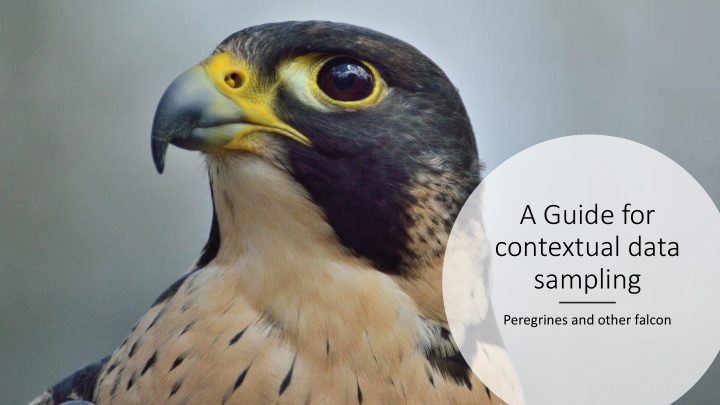



A Guide for contextual data sampling Peregrines and other falcon
Introduction
STSM Holder Lucie Michel, MSc. Biology Giacomo Dell‘Omo , PhD
Why Peregrines? sensitivity! Peregrines have experienced a dramatic Population decline caused by contaminants. Today peregrine populations have recovered and expanded into new habitats. Good distribution across Europe. webcam Vicinity to human settlements. network! flag Many nests are easy to access and observe. species! High popularity in the public and can promote citizen science. Top predators, preying on resident and migrating birds.
Aims of the Mission Contextual data General raptor guidances are already well elaborated... Peregrines and other falcons Focus on specific field guidance! Contaminant studies Harmonized promote harmonized sampling sampling account for best utilization of data
Work progress Literature Workshop Draft Workshop Final What What will it Peregrine Protocol What is exists? look like? specifics? for Falcons needed? I am here
Contents insights into the draft protocol
Peregrine specifics • Over 99 % avian prey • Timing of breeding activity shifted with latitude • Sampling possibilities • Main Contaminants • Intentional Poisoning Gómez-Ramírez, P., Shore, R. F., Van Den Brink, N. W., Van Hattum, B., Bustnes, J. O., Duke, G., ... & Krone, O. (2014). An • Carefull with precise indication of overview of existing raptor contaminant monitoring activities in Europe. Environment international, 67, 12-21. location: Poachers! • Public attention
Guidelines for: • Basic contextual data • Timing and Handling • Determination of breeding parameters • Chick aging and sexing • Feather determination • Body measurements • Prey Item determination • Identification of subspecies • Background contextual data • Indications of intentional poisoning • Approaching a crime scene
Appendix • Pictures of capture methods and correct handling • Timing of Handling (schedule) • Checklist for: Organisation of fieldwork List of equipment • Template data sheets
Recommend
More recommend